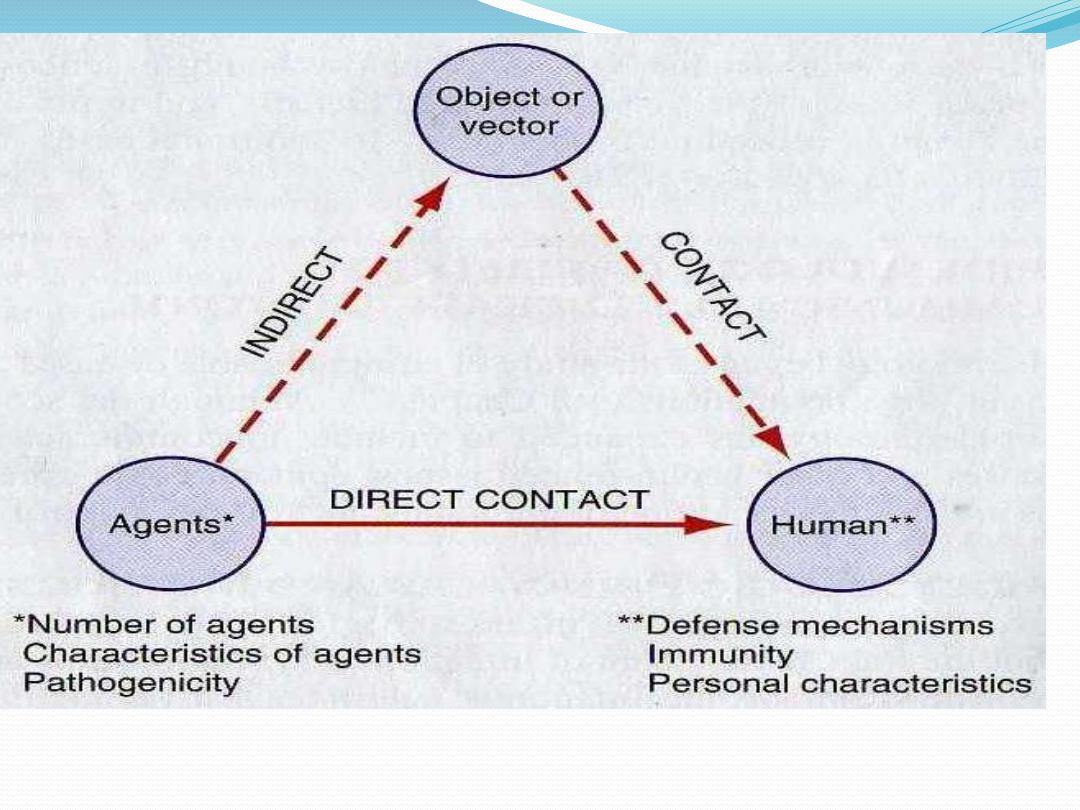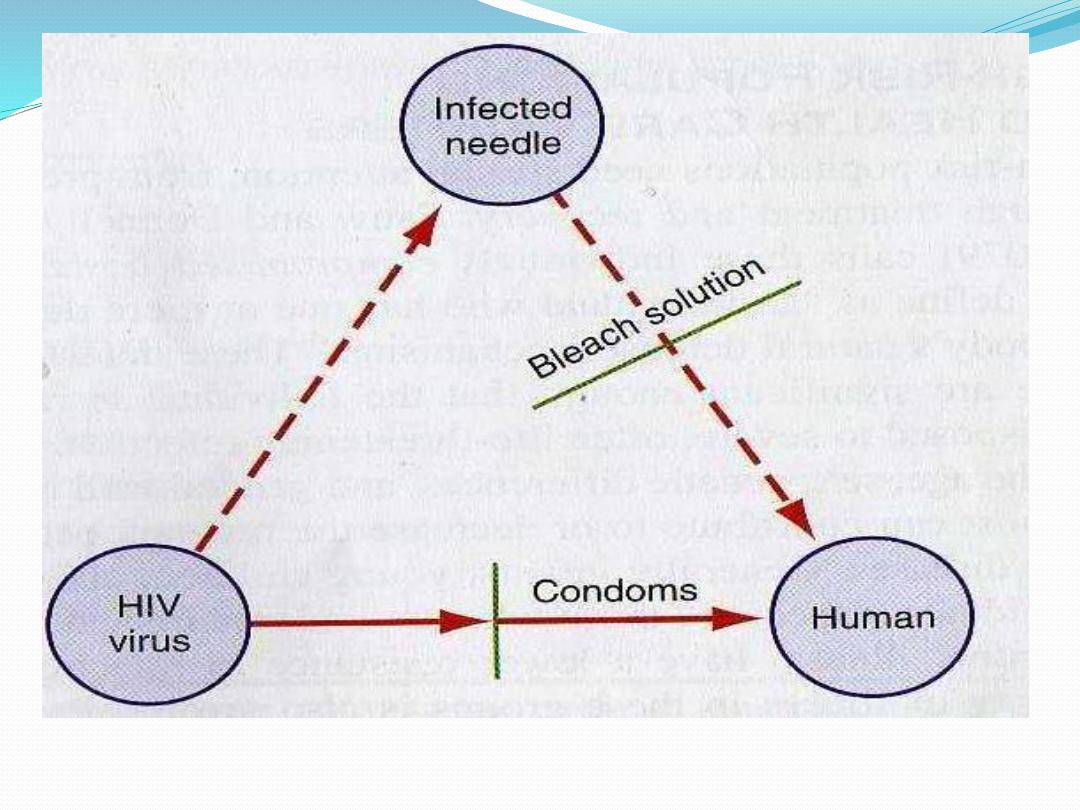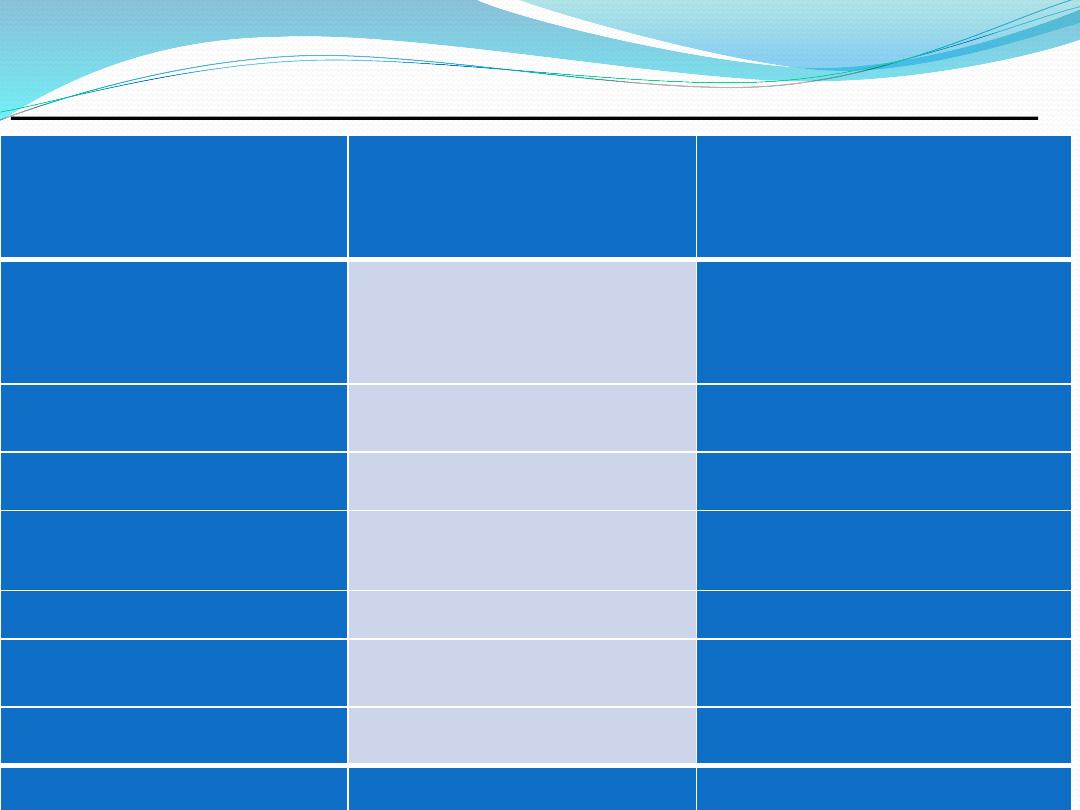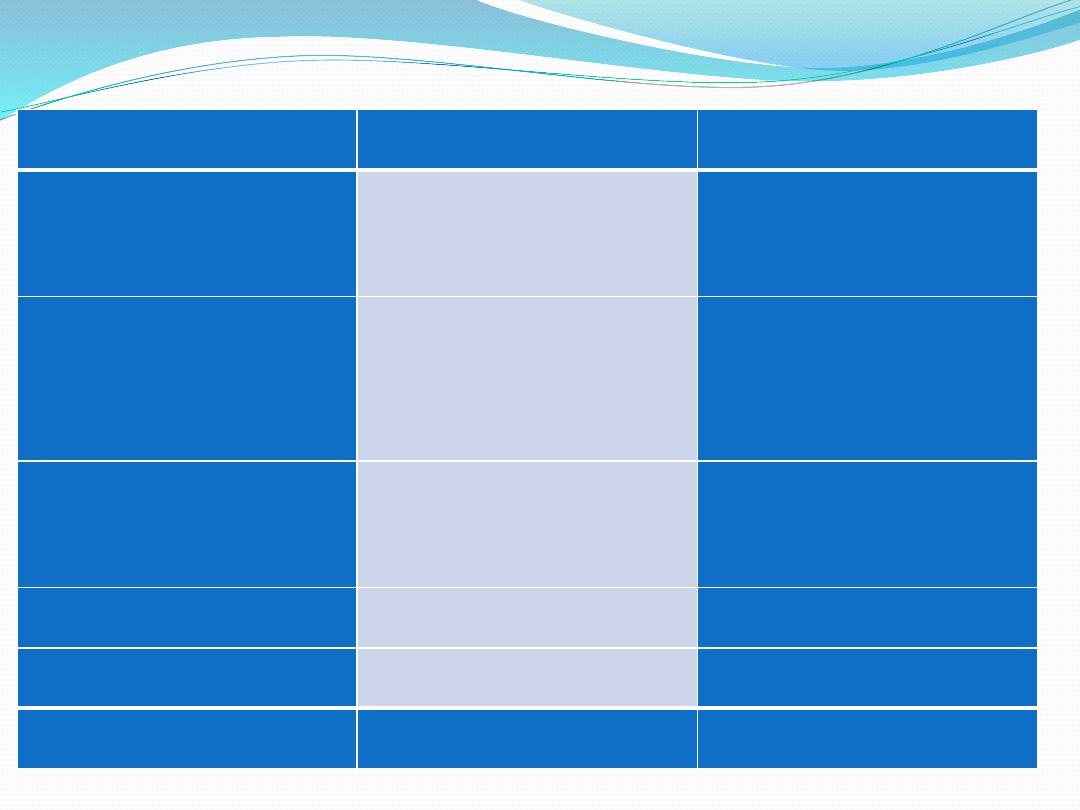
Nursing College – Mosul
University

Entry of pathogens:
The extent of the spread of an infection agent
in the body and length of time between
exposures to the agent on onset of disease
symptoms which called "Incubation period. e.g.
typhoid fever disease many as 10.000 peoples
that exposure in 1963 in Switzerland by drinking
water contaminated with Sal. typhi the cause of
the disease the long I.P. of the disease 10-14
days allowed widespread .

Respiratory tract system:
e.g. mumps, measles, Streptococcus, etc.
Digestive tract :
such as Clostridium perfringens(welchii ),Salmonella
typhi , Strep. Spp.
Urinary Tract
:e.g. E .coli , Klebssiella, Proteus.
Genital tract
:e.g. Gonococcus infection by N gonorrhea,
Trichomonasis
disease
by
Trichomonas
vaginlis
or
Syphilis cause by Treponema palladium.
Through skin
:. E.g. Gas gangrene cause by Clostridium
welchii or. Cl. tetani, Staph. Aurous, Smallpox virus, and
Herpes virus.
The route of any infectious agent:

Communicable disease:
•Communicable disease are infectious
disease when the source of infection
is human (man) e.g. measles, mumps,
hepatitis, AIDS, but sometimes not
human
e.g.
brucellosis,
toxoplasmosis, tetanus.
•Period of communicability is the
time of transfer of pathogenic
microorganism to form disease
.

Types of communicable disease
:
•Pathogenic microorganisms transmitted through
mucous membrane stick on it and causing fever
e.g. Diphtheria, measles, mumps.
• Late incubation period- clinical course-
convalescent- post convalescent period. (few
days-
several
weeks)
e.g.
poliomyelitis,
typhoid.
•Disease transmitted by sucking of arthropod
period (the period when the microorganism
found in blood) e.g. malaria, Leshmania, typhus
fever, yellow fever
.

Communicable disease occur in every country,
every urban and rural area, and in every
neighborhood from the very rich to the very
poor. Nurses who provide care in combating
communicable disease must have a basic
understanding
of
epidemiology
infection
control, microbiology, medicine, public health
and nursing. Furthermore the community nurse
must be having knowledge of the legal system
which mandates prevention and control of
communicable disease locally, nationally, and
worldwide.

Applied of epidemiologic Principles
and Methods:
Epidemiology began as the study of
communicable disease affecting large
population. Although the scope of
epidemiology has expanded to include
noncommunicable disease and other
health-related
issues,
epidemiologic
principles are still the backbone of
communicable disease control
.

Preventing communicable disease begins
with knowledge about:
▪The links in the chain of infection.
▪The relationships and interactions among -
-
The infectious agent (causative
microorganism )
-
The host (human or animal incubating the
agent ).
-
The environment (i.e., the epidemiology
triangle).

Communicable disease control depends
on:
1.
Discovering the weak link in the triangle.
2. Developing measures that attack and
reduce or eliminate that threat.
3. Control efforts include prevention
activities and efforts to reduce the
seriousness of an illness as measured by
severity, the length of illness , the cost of
treatments , the short- and long-term
effects, and the risk of death

Communicable Disease Investigation:
In accordance with epidemiologic
principles, communicable disease
investigation involves five steps:
1-
Identify the disease.
2-
Isolated the causative agent.
3-
Determine the method of transmission.
4-
Establish the susceptibility of the
population at risk.
5-
Estimate the impact on the population.

Causative agent: Pathogenicity, invasiveness, virulence
and active inactive dose.
Means of transmission: Direct or indirect contact,
source to a new host or carrier droplets etc.
Characteristic of host: Immunity defense mechanisms
include tears, skin, mucus, saliva and cilia –hairs in nose,
also as natural or artificial
immunity, active or passive
immunity.
Environment:
Communicable
disease
control
as
temperature, humidity radiation, pressure, and ventilation
.By this can all be used to decrease the transmission of
infectious disease. Crowding, famine, and mobility of
people increase the possibility of spreading disease.

Fig. 2.2 transmission 0f communicable disease

Fig: 2.3 breaking the chain of infection in HIV and AIDS.

Chickenpox
Vercella- Zoster
Virus (VZV)
14-16 days
Diphtheria
Corynebacterium
diphtheria
2-5 days
Pertusis
Bordetella pertusis
6-20 days
Whooping cough
German measles
Rubella virus, Rubivirus
14-21days
Measles/rubella
Rubeda virus
9-12 days
(paramyxovirus)
Mumps
Mumps virus
16-18 days
1: Respiratory Route:
Disease
Causative agent Incubation peioroid

Mumps
Mumps virus
16-18 days
Tuberculosis (TB)
Myco.
tuberculosis
(d) several weeks
Influenza
virus , (flu)
1-2 days
Mononucleosis
Epstein- Barr
virus
2 weeks
Kissing disease
(EPU)
Influenza
Hemophilus
influenzae
less than 10 days
Erthema infectious
Illness rash
Week-months
Scarlet fever
B- hemolytic
Streptococcus
3-6 days

Impetigo
Group A
Streptococcus or
Staphylococcus
4-10 days
Pediculosis
Parasitic lice
Lice 10 days
Scabies
Parasitic mite
Long as eggs or
mites are alive
Tetanus
Clostridium tetani
Ally 8 days
2: IntegumentaryRoute:

Poliomyelitis
Poliovirus
6-20 days
Salmonellosis
Salmonella typhior
Sal. paratyphi
7-10 days
Shigellosis (Bacillary
Dysentery)
Shigella spp.
(week) depend
on serotype
Intestinal parasites
(round worms and
pinworms
Months or more
Toxoplasmosis
Toxoplasma gondii
Long periodic
(protozoa)
Latent phase
Hepatitis A ( HAV )
Hepatitis A virus
15-40 days
3:
Gastrointestinal Route:

Hepatitis B (
HBV )
Hepatitis B virus
(HBV)
1-6 months
AIDS
Human
immunodeficiency
Virus (HIV)
2-10 years
Before AIDS
4 :
Serum Route
:

5:
Sexually Transmitted Route
:
Herpes
Herpes simplex
virus(HSV-1) (HSV-2)
2-12 days After
exposure
Cytomegalovirus(Mon
onucleosis)
(CMV)
6 months
Venereal warts or HPV
Papiloma virus
1-3 months
Gonorrhea
Neisseria gonorrhea
2 days-3 weeks
Chlamydia
Chlamydia spp.
5 days- longer
Syphilis
Treponemapallidum
3-6 weeks

Disease:
Disease is Latin word mean dis = lack, ease = power mean
lack of power or discomfort. Disease defines as abnormal
state in which body physiology can't restore body comfort.
Any disease results from end of two forces:
Force of agent depend on
:
Type of agent.
Virulence factor of agent
Dose of infected agent
.
Force of host depend on :
Nonspecific resistance.
Natural immunity
Acquired immunity
.

Force of host
Force of agent
End results
Very high
Very low
No disease
High
Low
Subclinical
without
Mild
Mild
Sign and symptom
Low
High
Moderate or
severe disease
Very low
Very high
Fulminate (very
sever disease)
Low
Rapid Exotoxins large
death

Disease Investigation
Establish diagnosis
Identify specific agent
Describe according to person, place
and time
Identify source of agent
Identify mode of transmission
Identify susceptible populations

End result of the disease:
1. Complete recovery.
2. Clinical case (carrier).
3. Recovery with defect.
4. Death.
Incubation period start from the entrance
of micro-organisms to the body until the
appearance of sign a symptoms, (clinical
cores of disease the appearance of sign
and symptoms).
